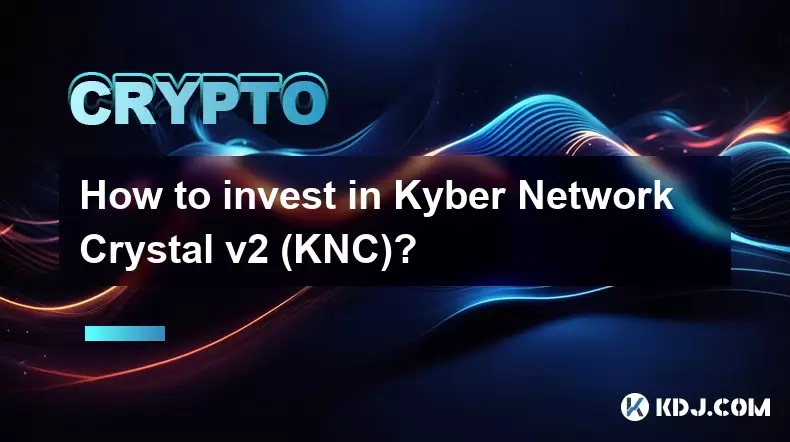-
 Bitcoin
Bitcoin $117700
-1.00% -
 Ethereum
Ethereum $4458
-3.91% -
 XRP
XRP $3.119
0.14% -
 Tether USDt
Tether USDt $1.001
-0.02% -
 BNB
BNB $836.6
-1.56% -
 Solana
Solana $189.5
-3.90% -
 USDC
USDC $0.9998
-0.02% -
 Dogecoin
Dogecoin $0.2335
1.29% -
 Cardano
Cardano $0.9642
1.51% -
 TRON
TRON $0.3539
-1.19% -
 Hyperliquid
Hyperliquid $47.41
-1.84% -
 Chainlink
Chainlink $21.92
-3.28% -
 Stellar
Stellar $0.4286
-0.23% -
 Sui
Sui $3.724
-3.29% -
 Bitcoin Cash
Bitcoin Cash $594.8
-0.78% -
 Ethena USDe
Ethena USDe $1.001
0.04% -
 Hedera
Hedera $0.2501
-2.06% -
 Avalanche
Avalanche $23.96
-4.87% -
 Litecoin
Litecoin $119.0
-2.32% -
 Toncoin
Toncoin $3.473
0.82% -
 UNUS SED LEO
UNUS SED LEO $9.596
0.17% -
 Shiba Inu
Shiba Inu $0.00001301
-0.39% -
 Uniswap
Uniswap $11.03
-0.25% -
 Polkadot
Polkadot $3.935
-2.62% -
 Dai
Dai $1.000
0.01% -
 Bitget Token
Bitget Token $4.564
-1.76% -
 Cronos
Cronos $0.1512
-4.11% -
 Ethena
Ethena $0.7306
-1.09% -
 Pepe
Pepe $0.00001087
-2.68% -
 Aave
Aave $300.2
-4.00%
What is FIL? How does FIL achieve distributed storage?
FIL, the native cryptocurrency of Filecoin, enables decentralized storage by incentivizing users to share unused space, ensuring data security and reliability through encryption and redundancy.
May 12, 2025 at 12:01 pm

What is FIL? How does FIL achieve distributed storage?
FIL, also known as Filecoin, is a decentralized storage network that aims to create a more efficient and secure way to store data on the internet. It is built on blockchain technology and uses a native cryptocurrency, also called FIL, to incentivize users to share their unused storage space. This article will delve into what FIL is and how it achieves distributed storage, providing a comprehensive understanding of its mechanisms and functionalities.
Understanding FIL and Its Purpose
FIL is the native cryptocurrency of the Filecoin network, which was created to facilitate a decentralized storage system. The primary purpose of FIL is to reward users who provide storage space and to incentivize the efficient use of the network. By using FIL, the Filecoin network aims to create a more reliable and cost-effective alternative to traditional centralized storage solutions.
The Filecoin network operates on a proof-of-replication and proof-of-spacetime consensus mechanism. These mechanisms ensure that data stored on the network is replicated and maintained over time, providing a high level of reliability and security. Users who want to store data on the network pay FIL to storage providers, who in turn earn FIL for maintaining and providing access to the data.
How FIL Achieves Distributed Storage
FIL achieves distributed storage through a combination of blockchain technology and a decentralized network of storage providers. Here's a detailed look at how this process works:
Data Storage Requests: When a user wants to store data on the Filecoin network, they create a storage deal. This deal specifies the amount of data to be stored, the duration of storage, and the amount of FIL they are willing to pay for the service.
Storage Providers: The storage deal is then broadcast to the network, where storage providers can bid to store the data. These providers are individuals or organizations that offer their unused storage space in exchange for FIL.
Proof-of-Replication: Once a storage provider is selected, they must provide a proof-of-replication to the network. This proof ensures that the data is actually stored and not just claimed to be stored. The provider must replicate the data across multiple locations to ensure redundancy and reliability.
Proof-of-Spacetime: Over time, the storage provider must also provide proof-of-spacetime to demonstrate that the data is still being stored and maintained. This proof is periodically checked by the network to ensure ongoing compliance.
Payment and Rewards: The user pays the agreed-upon amount of FIL to the storage provider, who earns FIL for successfully storing and maintaining the data. This incentivizes providers to offer reliable storage services.
The Role of FIL in the Filecoin Ecosystem
FIL plays a crucial role in the Filecoin ecosystem by serving as the currency that drives the network's operations. It is used to pay for storage services, reward storage providers, and incentivize the efficient use of the network. The value of FIL is directly tied to the demand for storage on the Filecoin network, making it an integral part of the system.
In addition to its role in transactions, FIL is also used to govern the Filecoin network. Holders of FIL can participate in the network's governance by voting on proposals and changes to the protocol. This decentralized governance model ensures that the network remains community-driven and responsive to the needs of its users.
Security and Reliability in FIL's Distributed Storage
FIL ensures the security and reliability of its distributed storage through several key mechanisms:
Encryption: Data stored on the Filecoin network is encrypted to protect it from unauthorized access. This ensures that even if a storage provider were to breach their obligations, the data would remain secure.
Redundancy: The proof-of-replication mechanism requires data to be stored in multiple locations, providing redundancy and reducing the risk of data loss. If one storage provider fails, the data can still be accessed from other locations.
Verification: The proof-of-spacetime mechanism ensures that data is continuously verified and maintained over time. This ongoing verification process helps to maintain the integrity and availability of the data.
Incentives: The use of FIL to reward storage providers creates a strong incentive for them to maintain high levels of service. Providers who fail to meet their obligations risk losing their FIL rewards, encouraging them to provide reliable storage services.
Practical Applications of FIL's Distributed Storage
FIL and the Filecoin network have a wide range of practical applications, making them valuable tools for various industries and use cases:
Data Backup and Archiving: Businesses and individuals can use the Filecoin network to store backups and archives of their data. The decentralized nature of the network ensures that data is stored securely and redundantly, reducing the risk of data loss.
Content Distribution: Content creators can use the Filecoin network to distribute their content to a global audience. By storing content on the network, creators can ensure that it is accessible and available to users around the world.
Decentralized Applications: Developers can build decentralized applications (dApps) on top of the Filecoin network, leveraging its storage capabilities to create new and innovative services. These dApps can range from decentralized file-sharing platforms to secure data storage solutions.
Research and Scientific Data: Researchers and scientists can use the Filecoin network to store and share large datasets. The network's decentralized nature ensures that data is accessible to the global research community, facilitating collaboration and innovation.
Getting Started with FIL and Filecoin
For those interested in using FIL and the Filecoin network, here are the steps to get started:
Obtain FIL: The first step is to acquire FIL, which can be done through various cryptocurrency exchanges that support the token. Users can purchase FIL using other cryptocurrencies or fiat currencies, depending on the exchange.
Set Up a Wallet: Users need a compatible wallet to store their FIL. There are several wallets available that support FIL, including hardware wallets and software wallets. Choose a wallet that meets your security and usability needs.
Interact with the Filecoin Network: Once you have FIL and a wallet, you can start interacting with the Filecoin network. This can involve storing data on the network, providing storage space as a provider, or participating in the network's governance.
Use Filecoin Applications: There are various applications and tools built on top of the Filecoin network that users can explore. These applications can help you manage your data, monitor your storage deals, and engage with the Filecoin community.
Frequently Asked Questions
Q: How does FIL compare to other decentralized storage solutions?
A: FIL and the Filecoin network are unique in their use of a native cryptocurrency to incentivize storage providers and ensure the reliability of the network. Compared to other solutions like IPFS or Sia, Filecoin's proof-of-replication and proof-of-spacetime mechanisms provide additional layers of security and verification, making it a robust option for decentralized storage.
Q: Can FIL be used for private data storage?
A: Yes, FIL can be used for private data storage. The Filecoin network supports encryption, ensuring that data stored on the network remains private and secure. Users can encrypt their data before storing it on the network, providing an additional layer of protection.
Q: What are the potential risks of using FIL for storage?
A: While FIL and the Filecoin network offer many benefits, there are potential risks to consider. These include the volatility of the FIL token, the reliance on storage providers to maintain data integrity, and the potential for network congestion affecting storage and retrieval times. Users should carefully assess these risks before using FIL for storage.
Q: How can I contribute to the Filecoin network as a storage provider?
A: To contribute to the Filecoin network as a storage provider, you need to set up the necessary hardware and software to offer storage space. You can then join the network and start bidding on storage deals. As a provider, you will earn FIL for successfully storing and maintaining data, contributing to the overall health and efficiency of the network.
Disclaimer:info@kdj.com
The information provided is not trading advice. kdj.com does not assume any responsibility for any investments made based on the information provided in this article. Cryptocurrencies are highly volatile and it is highly recommended that you invest with caution after thorough research!
If you believe that the content used on this website infringes your copyright, please contact us immediately (info@kdj.com) and we will delete it promptly.
- Kazakhstan's Crypto Leap: Bitcoin ETF and Central Asia's Digital Finance Future
- 2025-08-13 12:45:19
- BlockDAG Presale Blazes Past $371M: Fundraising Frenzy Fuels Crypto Sensation
- 2025-08-13 13:05:21
- Meme Coins: Chasing the 2025 Surge – Which Will Moonshot?
- 2025-08-13 10:25:23
- Bitcoin's Wild Ride: Rally, Pullback, and What's Next
- 2025-08-13 10:25:23
- Bitcoin, Bitmax, and Institutional Demand: A New Era of Crypto Investment
- 2025-08-13 10:45:12
- Solana, ROAM, and Airdrops: What's the Buzz in 2025?
- 2025-08-13 11:35:13
Related knowledge

How to purchase Aragon (ANT)?
Aug 09,2025 at 11:56pm
Understanding Aragon (ANT) and Its PurposeAragon (ANT) is a decentralized governance token that powers the Aragon Network, a platform built on the Eth...

Where to trade Band Protocol (BAND)?
Aug 10,2025 at 11:36pm
Understanding the Role of Private Keys in Cryptocurrency WalletsIn the world of cryptocurrency, a private key is one of the most critical components o...

What is the most secure way to buy Ocean Protocol (OCEAN)?
Aug 10,2025 at 01:01pm
Understanding Ocean Protocol (OCEAN) and Its EcosystemOcean Protocol (OCEAN) is a decentralized data exchange platform built on blockchain technology,...

How to invest in Kyber Network Crystal v2 (KNC)?
Aug 12,2025 at 05:21pm
Understanding Kyber Network Crystal v2 (KNC)Kyber Network is a decentralized liquidity hub built on the Ethereum blockchain that enables instant token...

Where can I buy UMA (UMA)?
Aug 07,2025 at 06:42pm
Understanding UMA and Its Role in Decentralized FinanceUMA (Universal Market Access) is an Ethereum-based decentralized finance (DeFi) protocol design...

How to sell my Ren (REN) tokens?
Aug 13,2025 at 11:35am
Understanding REN Tokens and Their Role in Decentralized FinanceREN is an ERC-20 token that powers the Ren protocol, a decentralized interoperability ...

How to purchase Aragon (ANT)?
Aug 09,2025 at 11:56pm
Understanding Aragon (ANT) and Its PurposeAragon (ANT) is a decentralized governance token that powers the Aragon Network, a platform built on the Eth...

Where to trade Band Protocol (BAND)?
Aug 10,2025 at 11:36pm
Understanding the Role of Private Keys in Cryptocurrency WalletsIn the world of cryptocurrency, a private key is one of the most critical components o...

What is the most secure way to buy Ocean Protocol (OCEAN)?
Aug 10,2025 at 01:01pm
Understanding Ocean Protocol (OCEAN) and Its EcosystemOcean Protocol (OCEAN) is a decentralized data exchange platform built on blockchain technology,...

How to invest in Kyber Network Crystal v2 (KNC)?
Aug 12,2025 at 05:21pm
Understanding Kyber Network Crystal v2 (KNC)Kyber Network is a decentralized liquidity hub built on the Ethereum blockchain that enables instant token...

Where can I buy UMA (UMA)?
Aug 07,2025 at 06:42pm
Understanding UMA and Its Role in Decentralized FinanceUMA (Universal Market Access) is an Ethereum-based decentralized finance (DeFi) protocol design...

How to sell my Ren (REN) tokens?
Aug 13,2025 at 11:35am
Understanding REN Tokens and Their Role in Decentralized FinanceREN is an ERC-20 token that powers the Ren protocol, a decentralized interoperability ...
See all articles

























































































